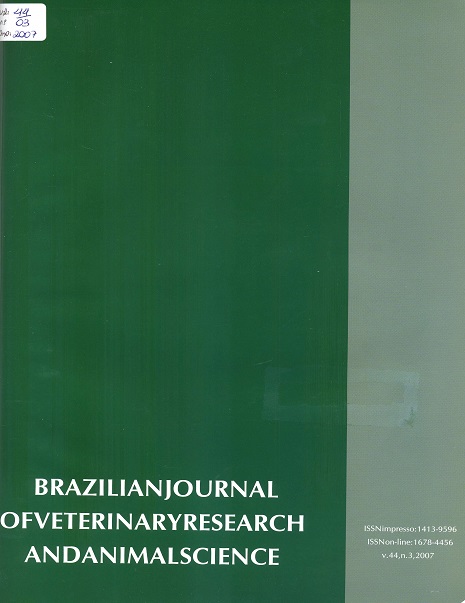A practical means for distinguishing africanized honey bees (Apis mellifera L.) from european honey bees by using central excitatory state, appendage mobility and sting viability
DOI:
https://doi.org/10.11606/issn.1678-4456.bjvras.2007.26641Keywords:
Classical conditioning, Behavior, Worker honey bee, Africanized honey bee, European honey beeAbstract
A key to understanding the expansion of Africanized honey bees (Apis mellifera) is distinguishing this aggressive form from its European relative. Current identification techniques have a degree of success, but each has its own set of problems, prohibiting wide-spread adoption and use. This study examined aspects of central excitatory state, persistence of mobile appendages, and a viable sting after decapitation for their use in distinguishing between these two races. Central excitatory state was not useful in distinguishing the Africanized honey bee from the European honey bee; however, appendage mobility and sting viability were significantly different between the two subspecies. Appendage mobility and sting viability are useful techniques for distinguishing the two subspecies, and alleviate the issues of expense, application, and accuracy.Downloads
Downloads
Published
2007-06-01
Issue
Section
UNDEFINIED
License
The journal content is authorized under the Creative Commons BY-NC-SA license (summary of the license: https://
How to Cite
1.
Aquino I de S, Abramson CI, Morris AW, Fernandes AC. A practical means for distinguishing africanized honey bees (Apis mellifera L.) from european honey bees by using central excitatory state, appendage mobility and sting viability. Braz. J. Vet. Res. Anim. Sci. [Internet]. 2007 Jun. 1 [cited 2025 Feb. 27];44(3):212-21. Available from: https://revistas.usp.br/bjvras/article/view/26641





